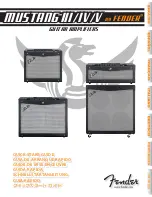
Getting Started
1- 8
TCPA300/400 Amplifiers and TCP300/400 Series Current Probes Instruction Manual
Connecting the Amplifier to an Oscilloscope
You will need an oscilloscope to display the TCPA300 and TCPA400 measure-
ment output. To use the full dynamic range of the probe/amplifier combination,
the oscilloscope must be capable of displaying a vertical scale factor of 1 mV/div
to 1V/div.
If you are using a TEKPROBE II-compatible oscilloscope, use the TEKPROBE-
to-TEKPROBE interface cable. Otherwise, use the supplied 50
Ω
BNC cable to
connect the amplifier OUTPUT connector to your oscilloscope (see Figure 1--1
on page 1--1).
The input impedance of the oscilloscope channel must be 50
Ω
, or you will
encounter slowed pulse response, increased aberrations, or incorrect DC
measurement amplitudes. If your oscilloscope provides only 1 M
Ω
inputs, you
need to attach a 50
Ω
feed-through termination between the oscilloscope input
and the BNC cable. Do not install this termination at the amplifier end of the
BNC cable.
To utilize the full bandwidth capability of the TCPA300 and TCPA400 and
attached current probe, the oscilloscope bandwidth must be approximately five
times that of the current probe. For example, when using a TCP312 Current
Probe, the oscilloscope bandwidth must be at least 500 MHz. When using a
TCP305 Current Probe, the oscilloscope bandwidth must be at least 250 MHz.
After you have connected the amplifier to the oscilloscope, allow the equipment
to warm up to a stable temperature; usually 20 minutes is required.
Power on the Amplifier
Connect the power cord to the power input connector on the rear of the amplifier,
and then connect the power cord to your local mains supply (100 VAC to 240
VAC, 50 Hz to 400 Hz). To allow for proper ventilation, place the rear panel of
the amplifier at least 2 inches away from any obstructions. Set the amplifier on
the bottom rubber feet, and keep papers and other items away from the bottom of
the amplifier which could restrict airflow and cause overheating.
Power on the amplifier by pressing the ON/STANDBY button at the lower-left
corner of the front panel. The amplifier goes through a self-test and cycles the
front-panel LEDs.
NOTE
. The amplifier stores the power state it is in when the power cord is
unplugged. If you do not put the amplifier into STANDBY mode before unplug-
ging it, the amplifier will power on immediately when you plug it in again.
When you connect a probe to the amplifier, the amplifier uses detection circuitry
to indicate probe conditions such as noncompatible probe type and probe open.
Summary of Contents for TCPA300 SERIES
Page 4: ......
Page 20: ...Preface xvi TCPA300 400 Amplifiers and TCP300 400 Series Current Probes Instruction Manual...
Page 21: ...Getting Started...
Page 22: ......
Page 37: ...Operating Basics...
Page 38: ......
Page 45: ...Reference...
Page 46: ......
Page 71: ...Specifications...
Page 72: ......
Page 88: ......
Page 89: ...Performance Verification...
Page 90: ......
Page 135: ...Adjustment Procedures...
Page 136: ......
Page 157: ...Maintenance...
Page 158: ......
Page 181: ...Replaceable Parts...
Page 182: ......
Page 199: ...Glossary and Index...
Page 200: ......
















































